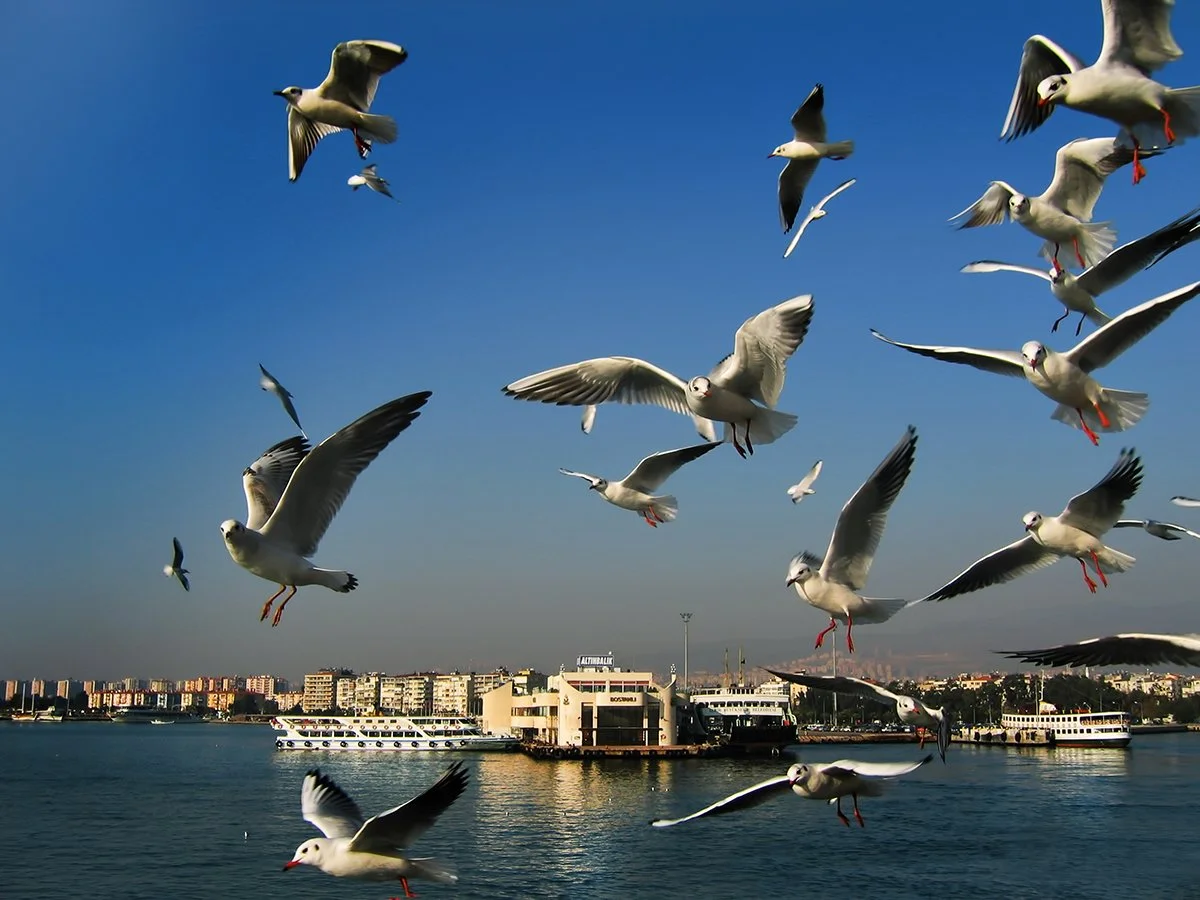Karşıyaka District
Karşıyaka (izmir city), Türkiye
Biophilic Cities Partner City Since 2023
Karşıyaka is a city within a city, located between the sea and forest, with a forested area to the north and coastline to the south.
Karşıyaka District constitutes the northwest portion of Izmir City. Within the southern portion of the district, an uninterrupted ecological corridor runs from the coastal segment of the Peynircioğlu Stream along the route of Halk Park. Throughout the area, flood control was achieved through the use of green spaces and permeable surfaces. Biodiversity attributes of the corridor include native plantings suitable for the Mediterranean climate and the installation of pollinator houses to allow the bees and insects that have traveled long distances to collect pollen and rest. In order to reduce the risk of flooding, permeable bicycle and walking paths were built to allow rainwater to mix underground. In addition, a 500-meter running track was created from tile semolina, which is a natural material. A 90-square meter fruit wall was also created with blackberry and grape berries.
Yamanlar Nature Park lies to the north of the city. Covered by red pine forests and maquis, it hosts a wide mosaic of vegetation ranging from dry maquis communities to chestnut forests. The dwarf maquis communities, which cover large areas in the lower regions of the mountain, are replaced by red pine and black pine forests at higher altitudes. Hairy oak (Quercus cerris), shaggy oak (Quercus pubescens), and flowering ash (Fraxinus ornus) are found in more humid areas within scattered larch forests. On the south-facing slopes, there are steep stream beds that dry up in summer and are covered with large oleander (Nerium oleander) communities. The rocks in the area are important habitats for wildlife with caves as particularly important for many bat species. The nature park also hosts a Youth Center for the city. The facility is built on 42 acres of land on the summit of Yamanlar Mountain. It offers a variety of recreational opportunities within a uniquely beautiful nature rich location.
At the border of the District is Gediz Delta, an internationally recognized Ramsar wetland. It is a large wetland system formed at the point where the Gediz River meets the sea on the west coast of Izmir Bay, and includes salt, fresh and brackish water ecosystems. Most of the delta sea border consists of sand bands covered with sea cowpea (Salicornia) and mussel shells. Behind the sand bands lie lagoons or broad saltwater coastal meadows.
263 bird species have been observed in the delta, and include endangered bird species such as the crested pelican (Pelecanus crispus), the little kestrel (Falco naumanni), the spur-winged lapwing (Vanellus spinosus), the black-billed tern (Sterna sandvicensis), and the bigeye Eurasian stone-curlew (Burhinus oedicnemus). Gediz Delta is well-known as one of the two important breeding areas of flamingo (Phoenicopterus roseus) in the country. In order to protect the Gediz Delta, the city has limited development within the border areas of the wetland system.
Recent planning efforts for the city have focused on the creation of the equitable distribution of and access to nature. Efforts have included the conversion of underused land into new green spaces, the development of new city gardens, and the creation of garden orchards within schools where fruits and vegetables are grown without the use of chemical fertilizers for the school children’s meals. The city has also opened a Seed Library in the city center, where it has protected nearly 1,500 local seeds from regionally grown plants. Miyavaki forests have also been created within the city, which complement larger scale efforts to create a forest reserve to connect Karşıyaka with Yamanlar and natural areas at the end of a longer green corridor. The urban forest area includes an educational area and an experimental area where new ecological approaches are tried.
Partner Representative:
Saadet Çağlın, Deputy of Mayor
Biophilic City Indicators
1- Green space per capita
2- Number of trees and plants planted
3- Number of activities in green areas
4- Number of events associated with biophilic traits
5- Number of trainings on climate change and environmental protection









